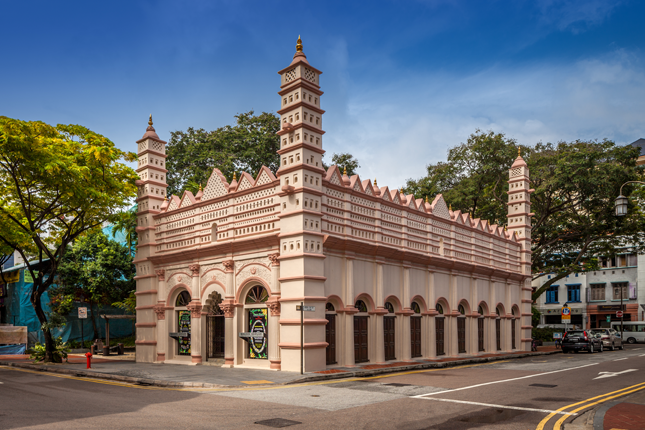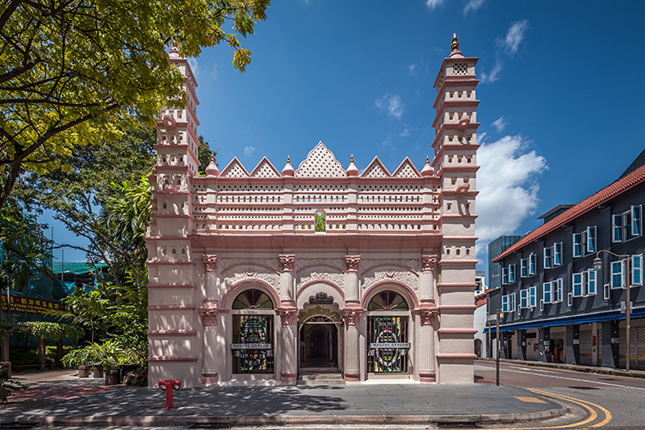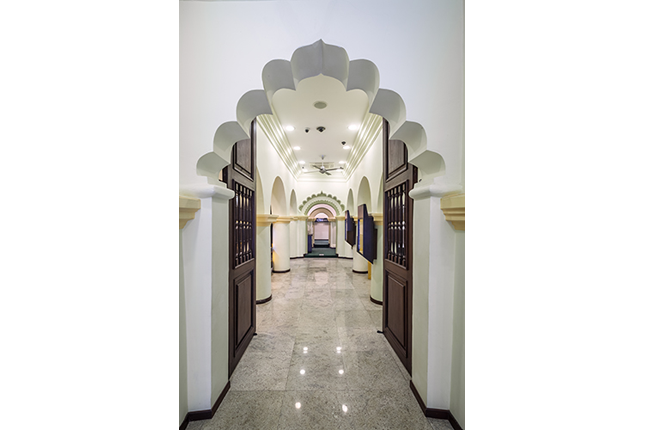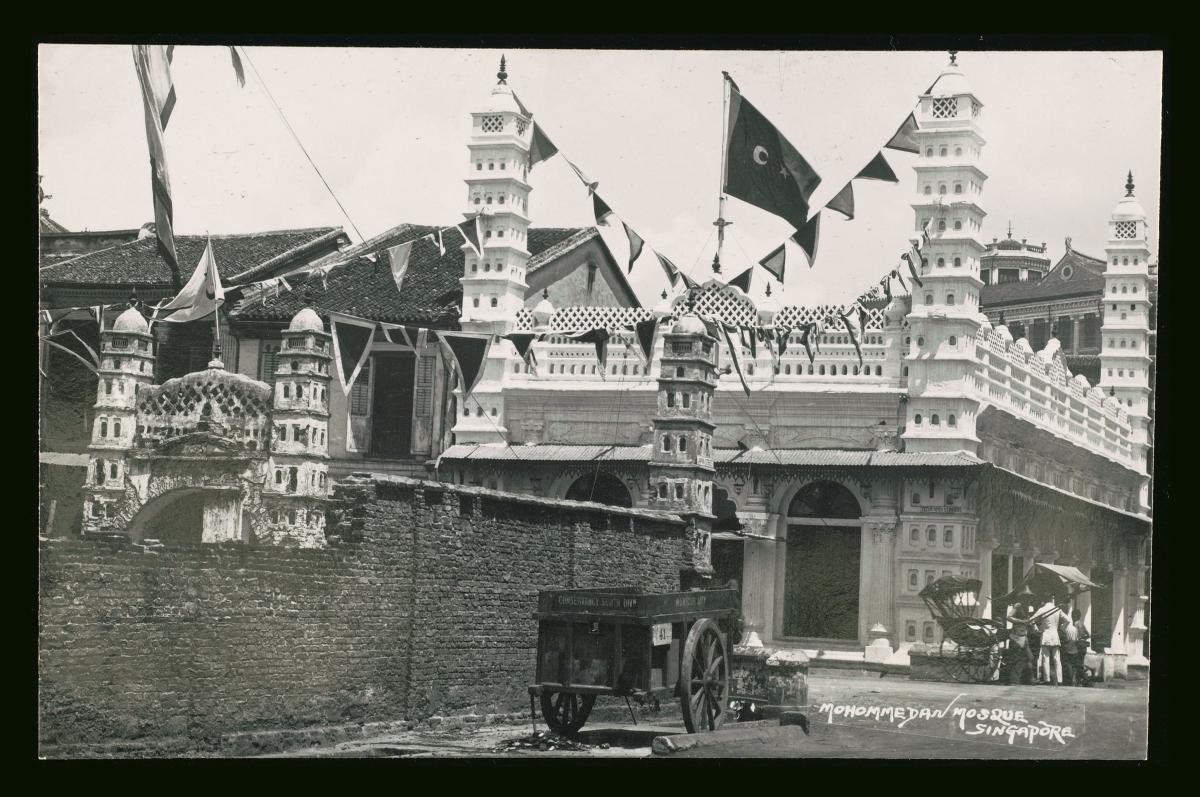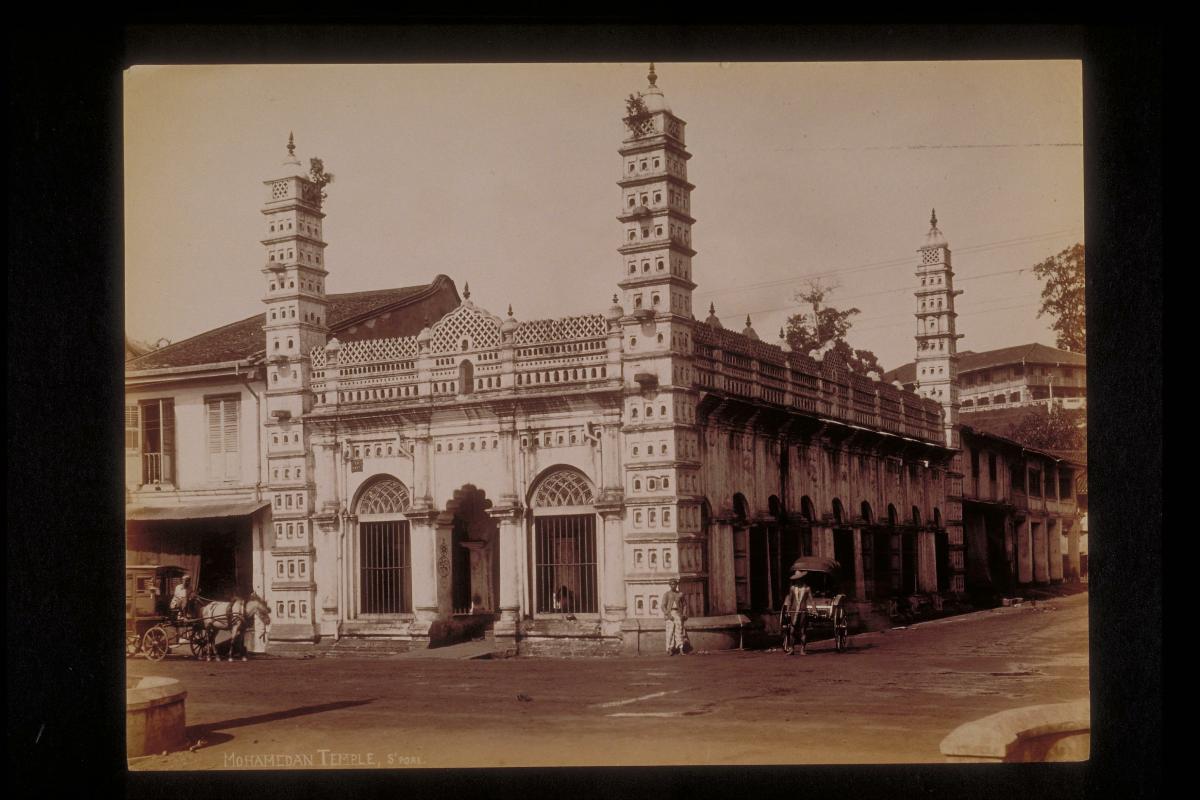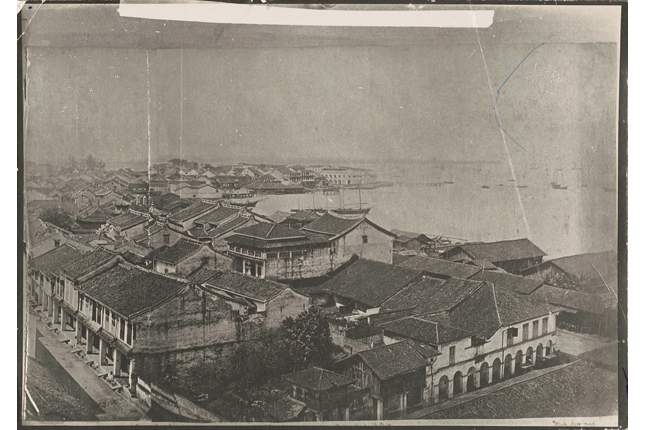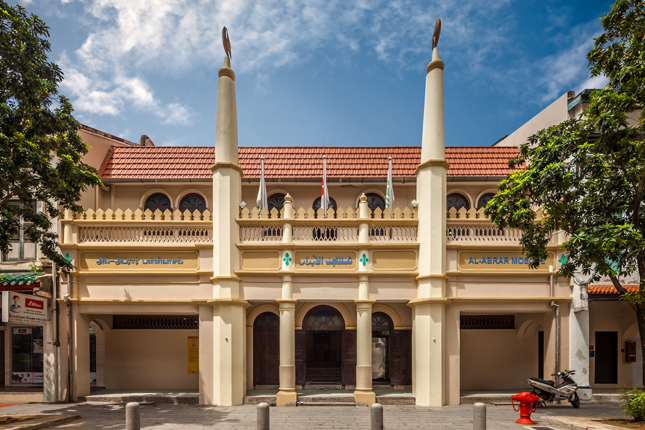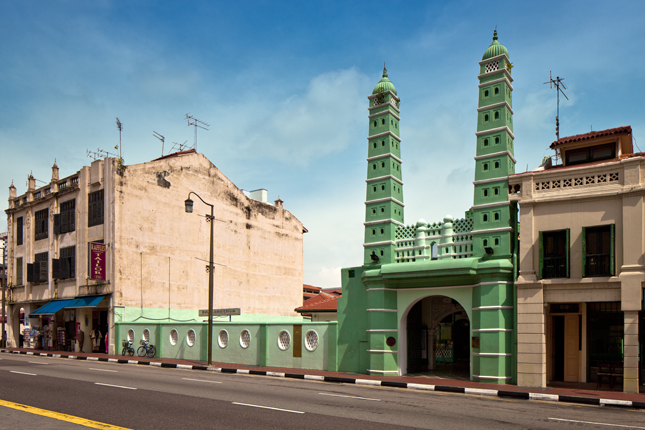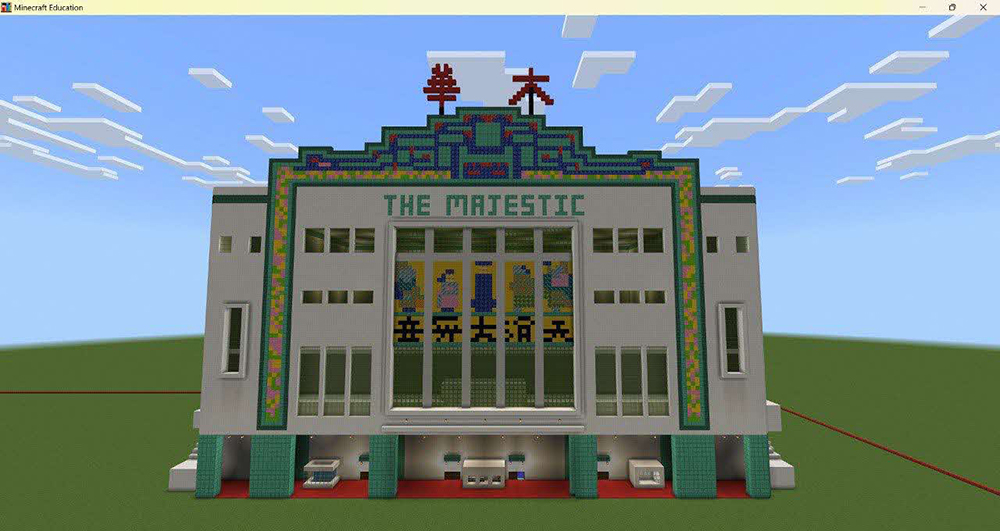The Former Nagore Dargah is situated on the historic Telok Ayer Street, a short distance from Telok Ayer Chinese Methodist Church, Al-Abrar Mosque, Thian Hock Keng, and the Former Keng Teck Whay Building. Erected by the Chulia community, the magnificent building testifies to their presence in Chinatown in the past and also to their contributions to early colonial Singapore's economy.
Devotion of the Chulias
Hailing from the Coromandel Coast in southern India, the Chulias first came to Singapore primarily as traders and moneychangers. Many of them were Muslim and devotees of the Tamil Sufi preacher-saint Shahul Hamid. It was believed that the saint performed several miracles; many sailors and seafarers attributed their safe journeys to him.
The actual shrine (or dargah) to the Sufi holy man is located in a town in Tamil Nadu called Nagore. To continue their tradition of venerating their beloved saint even when they were away from home, the Chulia pioneers built a shrine on Telok Ayer Street and named it Shahul Hamid Dargah. The land on which Nagore Dargah sits was leased to a certain man called Kaderpillai on the condition that the structure would not be constructed with attap and wood, a regulation imposed by the British authorities to reduce the risk of fire. Although the shrine - later renamed Nagore Dargah - commemorates Shahul Hamid, bodily relics of the Sufi saint are not enshrined there. A similar shrine can also be found in Penang.
In 1893, the court appointed a group of five trustees to oversee Nagore Dargah and Jamae Mosque. A new panel was later elected in 1910, and the trusteeship was extended to Al-Abrar Mosque. The management of these three religious sites, which form the Chulia wakaf (endowment), was handed over to the Mahomedan and Hindu Endowment Board in 1917.
Architecture and Furnishings
Designed in an eclectic style, the Former Nagore Dargah incorporates elements from different architectural traditions. Besides minarets and crescent-and-star motifs commonly found in mosques, the building also features fluted Corinthian and Doric pilasters on the façades, as well as Doric columns and arches inside. Large French-style windows with semi-circular fanlights line the wall facing Boon Tat Street, ensuring that the interior stayed well ventilated and cool.
Similar to Al-Abrar Mosque, Jamae Mosque and the memorial shrines in Nagore and Penang, the Former Nagore Dargah features a front façade that is most striking for its two square minaret-like towers extending beyond the building’s flat roof. These are clearly depicted in Percy Carpenter’s 1856 painting, ‘Telok Ayer Street as seen from Mount Wallich’. The towers are indented with niches, which were used to hold oil lamps on some religious festivals in the past. Connecting the towers is an intricate miniature palace façade, complete with numerous perforations of various designs representing doorways and windows. The main entrance of the building is marked by a Moorish multi-foliated arch. Mouldings of flowers and leaves adorn the façade wall.
Former Nagore Dargah Today
Today, the Former Nagore Dargah is under the purview of the Islamic Religious Council of Singapore (Majlis Ugama Islam Singapura, MUIS). Since 2011, it has been home to the Nagore Dargah Indian Muslim Heritage Centre, which documents the history of Indian Muslims and their many contributions to Singapore.
Our National Monuments
Our National Monuments are an integral part of Singapore’s built heritage, which the National Heritage Board (NHB) preserves and promotes for posterity. They are monuments and sites that are accorded the highest level of protection in Singapore.




